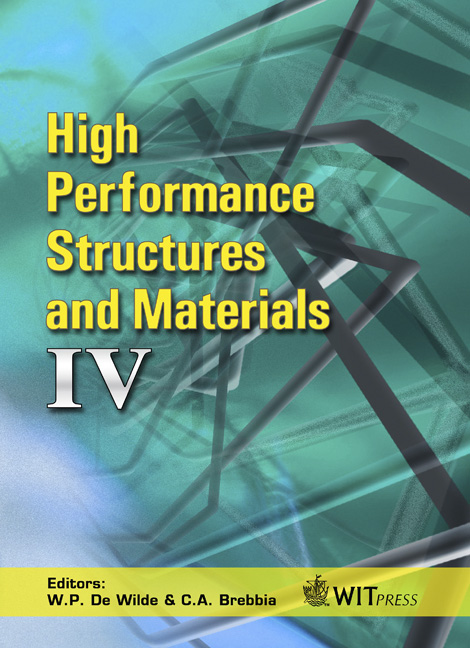Thermal Characteristics Of PLA-bamboo Composites
Price
Free (open access)
Transaction
Volume
97
Pages
9
Page Range
175 - 183
Published
2008
Size
497 kb
Paper DOI
10.2495/HPSM080191
Copyright
WIT Press
Author(s)
K. Kusano, H. Takagi, S. Kako, Y. Gennai & A. Ousaka
Abstract
The effective properties for the thermal characteristics of polylactic acid (PLA) bamboo composites, such as thermal conductivity, density and porosity were investigated experimentally. The thermal insulation characteristics are significantly dominated by these parameters. The thermal conductivity was measured by the transient hot wire method and the steady state method. The measured data was compared with each other and also used for the verification of the validity of Russell’s theoretical thermal conductivity model for green composites. The results show that the thermal conductivity of PLA-bamboo depends on the direction of fiber alignment as well as the direction of stacking. The thermal conductivity decreases gradually with decreasing the porosity (i.e., increasing the density of fiber). It was also clear that the theoretical estimation based on Russell’s model is adaptable to the anisotropic PLA-bamboo composites. All of the thermal conductivity measured by using the steady state method is lower than that measured by using the hot wire method. The thermal conductivity through the thickness direction is lower than that of surface plane averaged thermal conductivity. Due to the anisotropicy of its low thermal conductivity, the PLA-bamboo \“green” composites have excellent insulation properties. Keywords: bamboo fiber, polylactic acid, thermal conductivity, transient hot wire method, steady state method, porosity, Russell’s model, thermal insulation characteristics.
Keywords
bamboo fiber, polylactic acid, thermal conductivity, transient hot wire method, steady state method, porosity, Russell’s model, thermal insulation characteristics.





